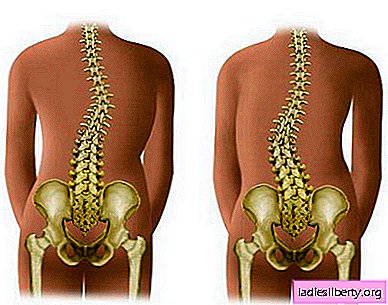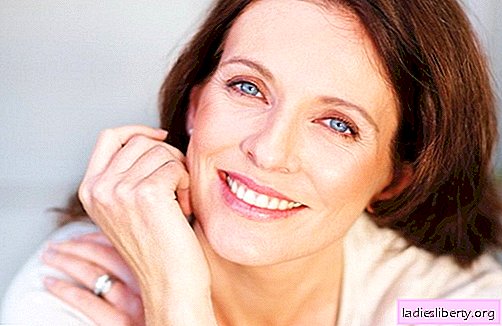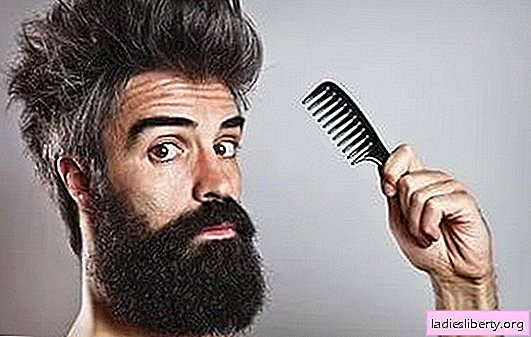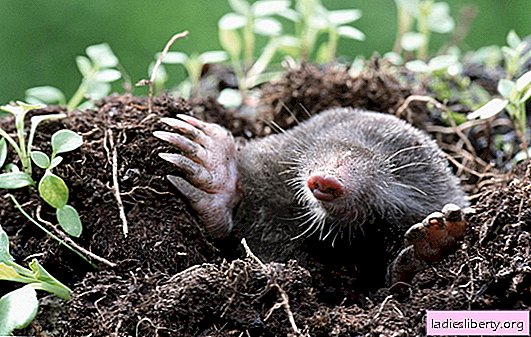
Scoliosis manifested by lateral curvature of the spine and in most cases occurs in children (S-shaped figure or left-side or right-side C-shaped arch). Scoliosis affects the frontal plane of the body, thereby differing from lordosis, in which the spine arches curved forward and kyphosis, which bends the spine back. However, scoliosis can get along with kyphosis and this combination is called kyphoscoliosis.
If there is no adequate treatment, then scoliosis begins to progress and worsen. So, scoliosis of the 1st degree can smoothly go into the 2nd and even 3-4th degrees, and then stay for the rest of your life.
The most common is thoracic scoliosis, which is also called torcal. As it develops, the lumbar region is gradually involved in the process and a curvature is formed that resembles the Latin letter S. This case is called combined.
There are also other types of scoliosis: torcalumbal (C-shaped region of the thoracolumbar junction is bent) and lumbar (lumbar).
Scoliosis - Causes
The main cause of scoliosis is a long-term change in posture, which creates an uneven load on the spinal column. One of the most important factors in the development of the disease is the spasm of the spinal muscles, which generates a stable skew of the spine, as well as idiopathic scoliosis (spinal curvature).
If spasm and hypertonicity simultaneously occur in the back muscles, then this combination can lead to the development of a disease such as osteochondrosis and its complications, in the form of intervertebral hernias and protrusions. From all of the above, we can conclude that the main problem of the spine are muscle cramps, which cause scoliosis in children and osteochondrosis in adults.
Scoliosis - Symptoms
Scoliosis in its majority is an age-related pathology. Its development begins during periods of very rapid, active growth, in which the bones are elongated partially disproportionately. Consequently, the body weight is distributed unevenly. It is difficult to adapt to all these transformations, and therefore certain deformations arise that are directly related to the uneven functioning of the spinal muscles.
Scoliosis can also cause Klippel-Fail syndrome, which is a congenital pathology or metabolic disease (polio), of the neuromuscular system. Scoliosis in the early stages does not manifest itself and does not cause the patient any discomfort, but as it progresses, the person begins to increase fatigue and the range of movements in the back area decreases. General well-being also worsens, while ignoring the disease, topographic changes and deformations in the internal organs develop.
Scoliosis - diagnosis
Usually use the test "in the slope." The patient bends the back with a “wheel” and the doctor behind him notes asymmetry: the curvature of the spine itself, the line of the supraspinal axis of the pelvis and the height of the shoulder blades. If you suspect or identify any pathologies, an X-ray examination is prescribed, which allows you to determine the presence of the pathological process, its localization and degree.
Scoliosis - treatment and prevention
It is necessary to start treating scoliosis in childhood. In practice, it is proved that childhood scoliosis (1-2 degrees) is quite successfully treated. But if time is lost, then after the final formation of the bone skeleton, scoliosis is almost impossible to correct.
The treatment itself includes a whole range of external exposure methods (manual therapy, physiotherapy, massage, etc.) and therapeutic exercises in combination with herbal medicine to eliminate exacerbation of concomitant diseases.
Exercises are prescribed individually. It depends on the degree and nature of the curvature. It is important not only to eliminate scoliosis, but also to prevent the development of osteochondrosis.
For prevention, the simplest thing to do is to observe the child’s posture. It is also very important that he feels comfortable in the correct position of the spine (back), otherwise he will stoop. To avoid this, it is necessary to prevent muscle spasms of the back in time with various preventive procedures: acupressure, reflexology, acupuncture, stone therapy and physiotherapy. It is advisable to conduct them regularly, once every six months or a year. This prophylaxis will not only eliminate spasm of the back muscles, but also help to create a good muscle corset that reliably holds the spinal column in the correct position.











